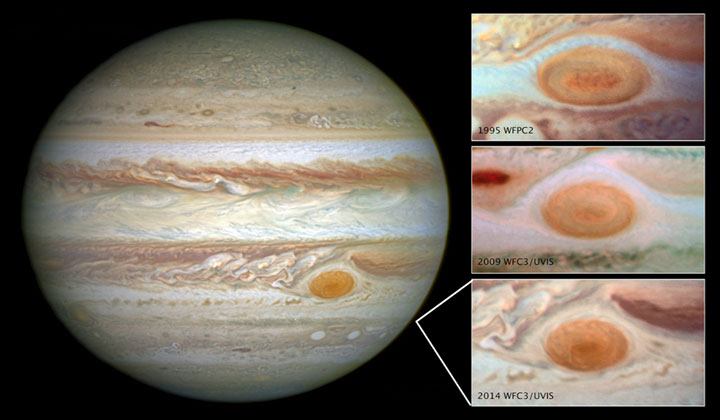TORONTO – Jupiter’s magnificent Great Red Spot, a hurricane-like storm that could swallow Earth twice over, has shrunk.

New observations have concluded that the giant gas planet’s trademark storm — which has been raging for hundreds of years — has shrunk to 16,496 km across.
Observations suggest that the storm has been shrinking over time. In the 1800s it was estimated to be around 41,038 km across. When NASA’s Voyager spacecraft flew by in 1979, the storm was calculated to be 23,335 km across. By 2009, Hubble measured it to be 17,912 km across.
Just why this is happening isn’t fully understood. But Amy Simon of NASA’s Goddard Space Flight Center believes that it could be due to the smaller eddies that are feeding into it. These eddies, more swirling clouds of gas, may be changing the internal dynamics of the giant storm.
Jupiter is the largest planet in our solar system. It’s so large that it contains more than twice the mass of all the planets in our solar system and could fit roughly 1,300 Earths into it.


Comments